Do you want to successfully learn the violin?
You’re bound to struggle and make mistakes along the way. That’s part of the learning process.
And in a way this is what makes learning fun.
But by being aware of common pitfalls, you’ll waste less time and energy.
Let me help you continue the violin journey with more confidence and joy!
10 Common Beginner Violin Mistakes
- Inconsistent practice
- Ignoring proper violin and bow posture
- Rushing through the learning process
- Playing out of tune
- Using too much bow
- The Death Grip
- Skipping warm-up exercises
- Not investing time in ear training
- Avoiding the metronome
- Overlooking the importance of relaxation
Now let’s go into greater detail on each mistake and how to avoid it.
Two ways I can help you on your violin journey 🎻
- Sign up for the Free Two-week Trial. You’ll get full access to all courses and group lessons. Plus, I’ll send you some free lessons tailored to your current skill level.
- Sign up for the FiddleHed newsletter below, then get high-value tips and lessons delivered to your inbox.
1. Inconsistent practice
Regular, consistent practice is the most important thing that any music student needs to do.
It seems obvious, but most everyone overlooks this.
If you practice consistently, you see results which encourage you to practice again tomorrow.
In this way you enter a virtuous cycle.
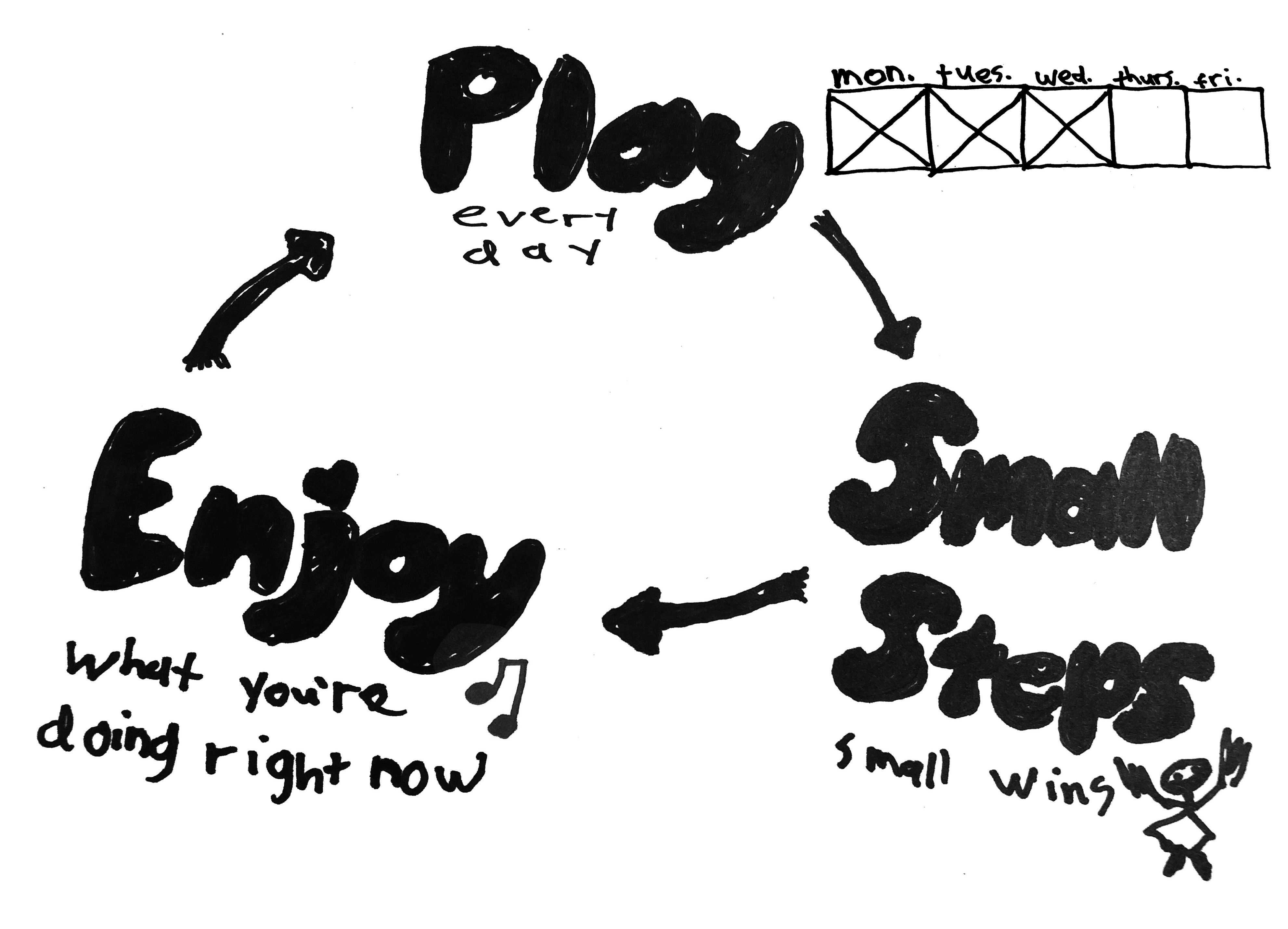
Solution: Play for at least two minutes a day at the same time and place.
This establishes the habit of practice. It helps you overcome that part of you that resists practicing.
Plus, if you commit to two minutes a day, chances are you’ll play longer.
Mark days that you practice on a wall calendar or app. Allow yourself to feel good as your streak grows.
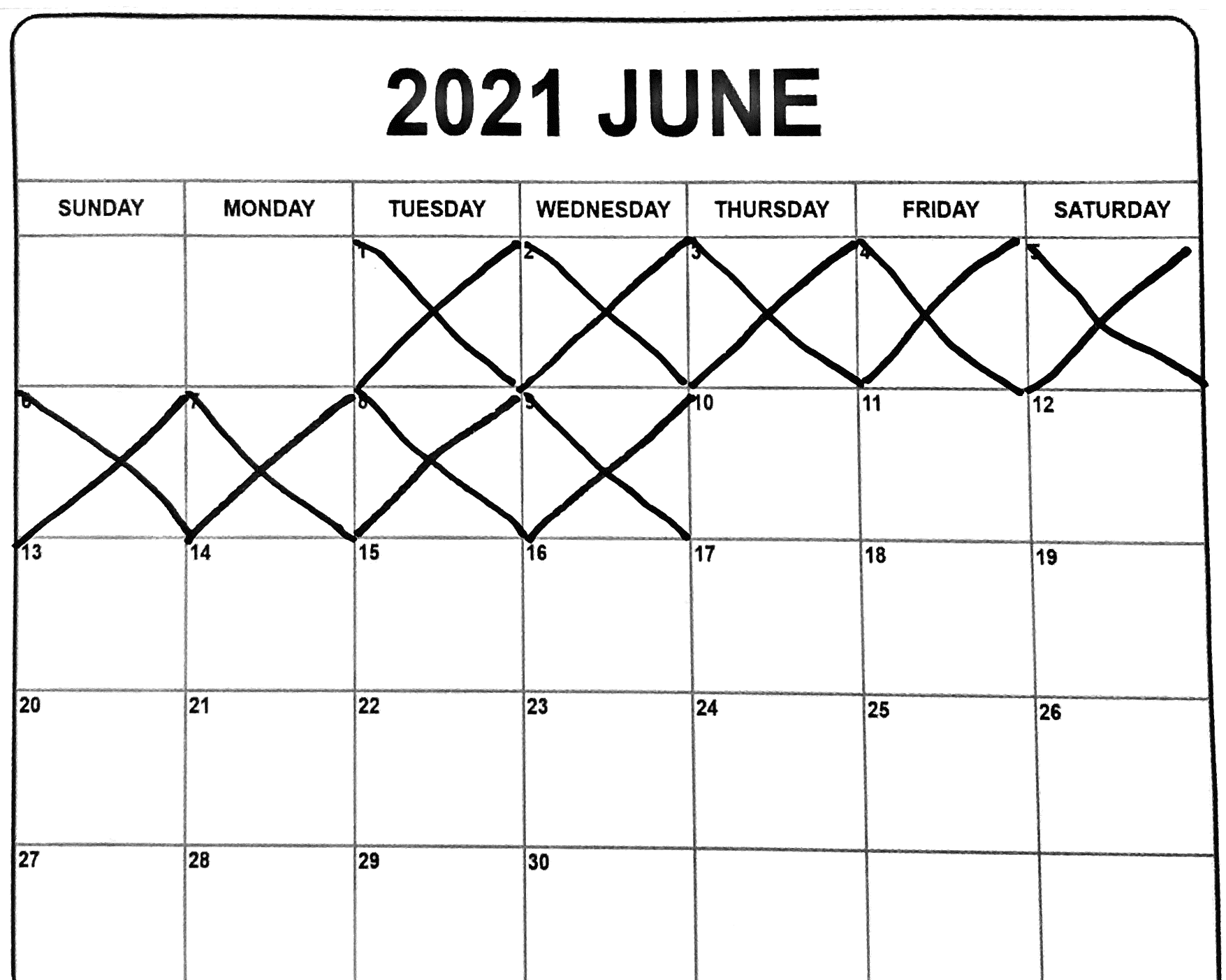
2. Ignoring proper violin and bow posture
One of the most common mistakes beginners make is neglecting the correct posture for violin playing, which is a FUNdamental for progress.
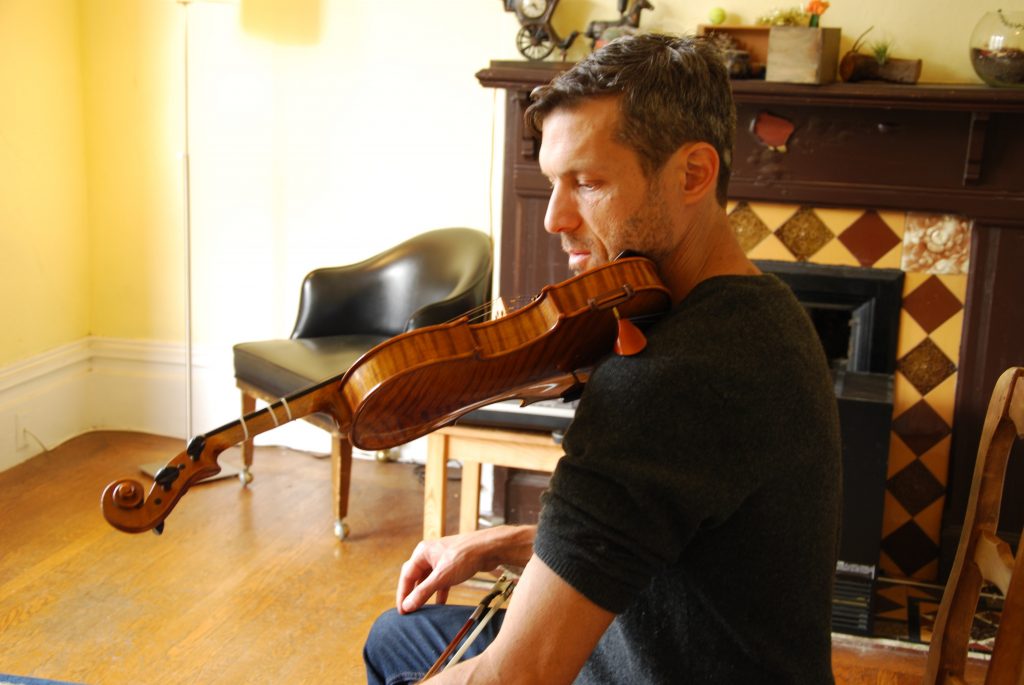
Solution: Simply pause throughout a practice session to check your posture, violin hold and bow hold. Then return to whatever you were working on.
3. Rushing through the learning process
Many beginners are excited and want to progress quickly.
Which is awesome! I love when students get excited. 💃🏻
But as a result, they rush through the learning process, develop bad habits and become disappointed in their sound.
Solution: Stay with new tunes long enough so that they sound good, not perfect.

Be able to play something from beginning to the end with flow. And if it’s a short enough piece, be able to play it from memory.
Then move on, assuming that you’ll return to the tune later on.
Review is a key part of the learning process. It helps you to further improve skills and strengthen the memory of what you’ve learned.
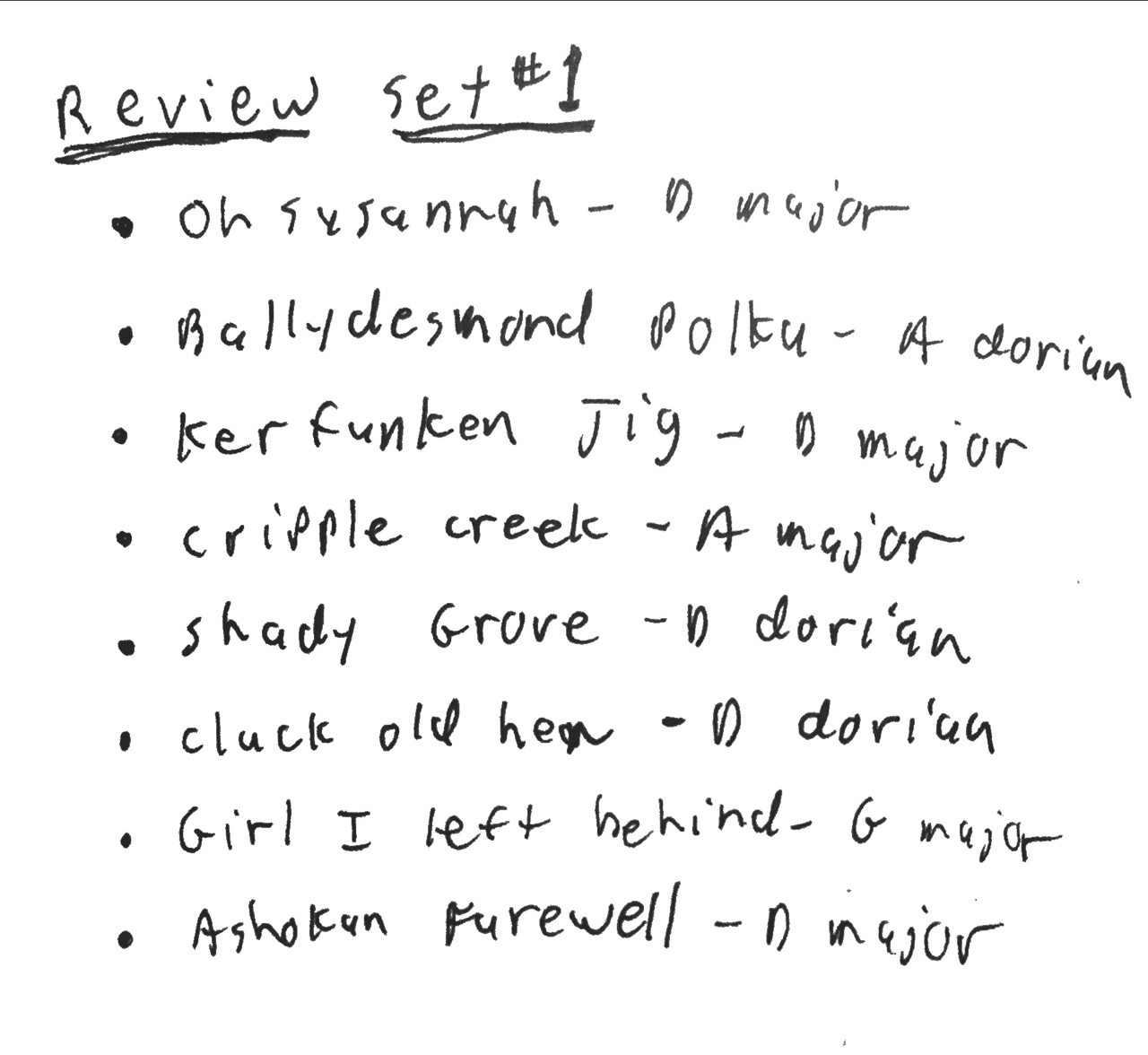
Here’s what’s ironic about not rushing. If you take the time to ground yourself in FUNdamentals and learn a handful of tunes well, you’ll eventually learn more quickly.
4. Playing out of tune
Beginners often don’t take the time to play in tune. But playing in tune is one of the main things that makes you sound good instead of bad.
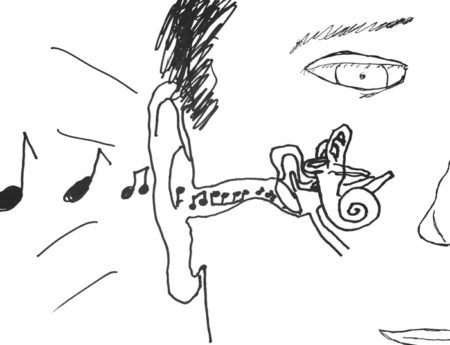
Solution: The most effective way to improve this is a process I developed called “Drone Tuning.” Play each note with a reference tone. For example, D1 is E so practice it with an E drone to play in tune.
Play D1 with the E Drone
5. Using too much bow
A lot of beginners use waaaay too much bow which makes performing difficult.

Solution: When you’re starting out, use short bow strokes in the middle of the bow. Divide the bow into thirds with tape. as a guide. As you become more advanced, you’ll learn to lengthen the bow.
6. The Death Grip
Beginning violinists tend to over-press the strings with the left-hand fingers. Leads to a poor sound quality. Plus, it strains your hand which makes the experience of practice less enjoyable.
Solution: Practice lightly placing the fingers without even playing music. Then try the same practice while playing two-note patterns.
D0-0-1-1
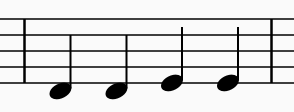
7. Skipping warm-up exercises
A lot of beginners don’t take the time to warm up their fingers, arms and ears. You start off with a small win that puts you in the right mindset for playing more challenging pieces and new skills.

Solution: Warm up with simple scales and familiar songs for 3-5 minutes. In addition to physically warming up the body, you kickstart your musical mind. You’ll feel more confident a you transition to learning hard new skills and pieces.
8. Not investing time in ear training
Active listening is vital for any musician, but beginners often don’t value its importance. Ear-training is especially important to violinists because it helps you play in tune (piano and guitar players don’t have to worry about this).
Solution: Practice ear-training with Call-and-response.
Practicing this way with a teacher or call and response tracks will help you to develop your ear and have fun along the way.
Use the call-and-response lesson above to learn a fun tune as you develop your ear.
PS: I’ve created an entire library of Call-and-response tracks in the Fiddlehed course.
9. Avoiding the metronome

Keeping time is another FUNdamental skill, but many beginners say they hate using a metronome.
It doesn’t have to be torture 😫. Metronome practice can be fun and deeply satisfying if you start with small steps.
Solution: Start by playing quarter notes on open D string with the metronome at a medium tempo (60 bpm).
D0-0-0-0
![]()
Enjoy the feeling as you become one with the beat. Gradually do more complex things like one-octave scales with the same metronome at 60 bpm:

Then do small chunks of a familiar tune like Freres Jacques with a metronome:
D0-1-2-0-0-1-2-0

Work through each chunk until you can do the whole song with the metronome.
First quarter: D0-1-2-0-D0-1-2-0
Second quarter: D2-3-A0-D2-3-A0
Third quarter: A0-1-0-D3-2-0-A0-1-0-D3-2-0
Fourth quarter: D0-G1-D0-D0-G1-D0
At each step of the way, the goal is to relax and become one with the beat. You more deeply learn something when you can play it with a metronome. And along the way your timing improves. This helps you to perform and ham with others!
10. Overlooking the importance of relaxation
Playing with unnecessary tension can hinder progress and lead to injuries in your back, neck and wrist. Many beginners fail to play in a relaxed manner.
Solution: Throughout a practice session, pause to pay attention to the breath and relax the body as you play a single note.
Keep that relaxed feeling as you start to play simple and then more complex things: intervals, scales, tune chunks and tunes.
Not only will this help your performance, but you’ll enjoy the feeling in your body as you practice.
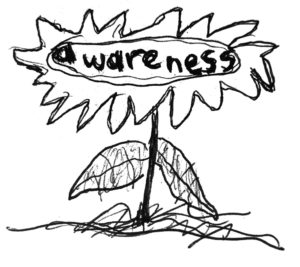
Conclusion
There you go. Ten common beginner violin mistakes.
If you’re feeling overwhelmed, remember the first thing on the list: consistent daily practice is by far the biggest mistake to avoid. If you find a way to play every day, then you’ll learn to practice well and eventually overcome all obstacles.
Remember, every mistake is a stepping stone to mastery. So, keep playing, keep learning, and most importantly, keep enjoying your music.
OK! I hope that helps. Best to you on your fiddle journey. And may your cat enjoy the music too.

Further learning
The Practice Challenge of Fiddling
How to Improve Your Timing With A Metronome



Thank you
Thanks for being here Stan
Great points to remember – thank you!
Great to hear your interest 🙂